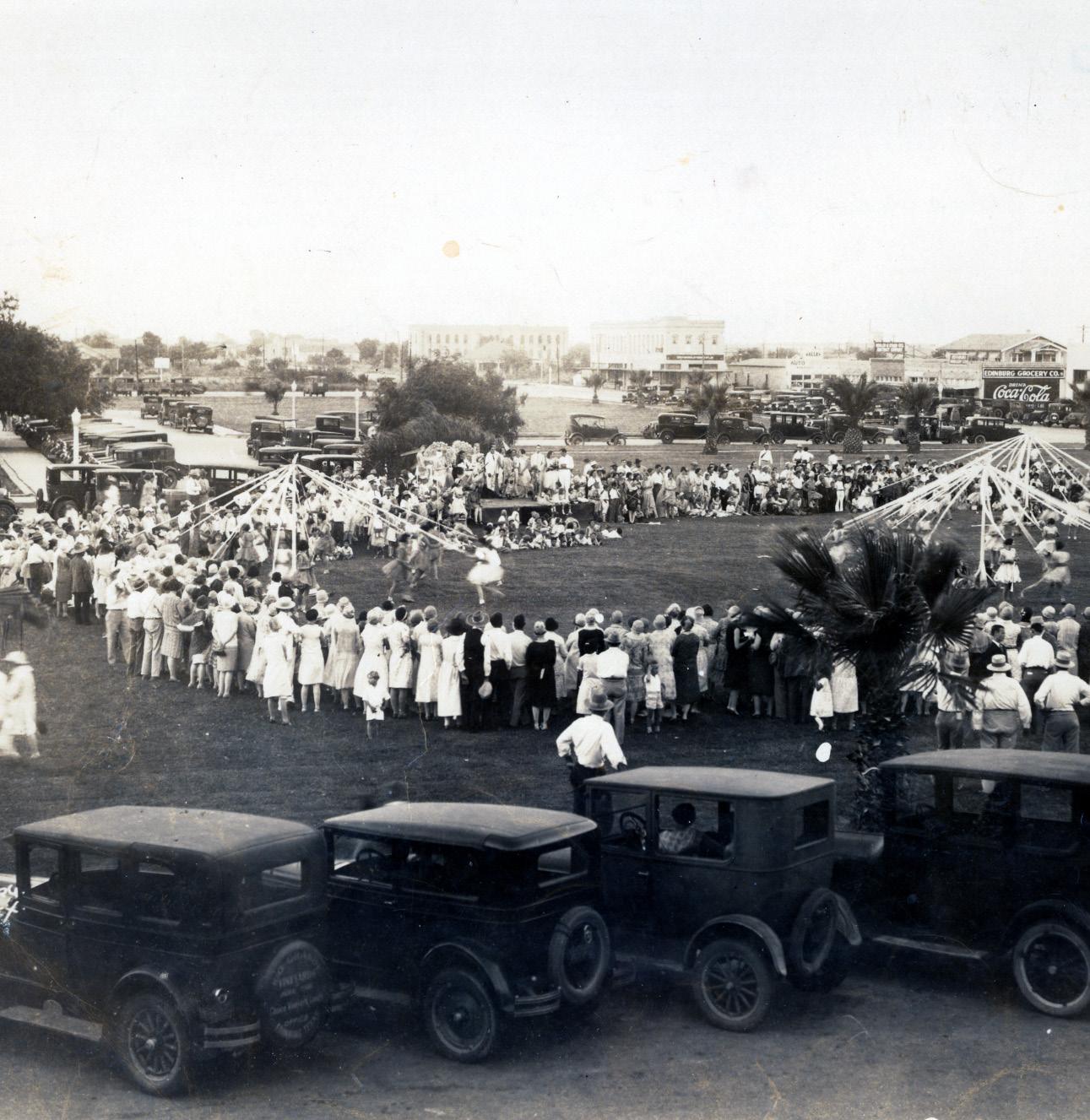
3 minute read
MOSTHistory The Maypole Celebration
By Sandy Pollock
In 1910, on a patch of land prone to flooding and uncertainty, the people of Edinburg, Texas, gathered for a Maypole celebration at the newly built Hidalgo County Courthouse. What could have been a moment of frustration over the poor land conditions became an act of strength, joy, and community spirit. The Maypole, a tradition of weaving colorful ribbons around a central pole, became a symbol of turning challenges into celebrations—a theme deeply ingrained in the culture of South Texas.
Building on Unsteady Ground
When the courthouse was built in 1908, its location was far from ideal. The land was low, marshy, and prone to flooding, making it an impractical choice for such an important structure. Yet, instead of lamenting their misfortune, the people of Edinburg embraced the moment, turning the space into a place for gathering and celebration.
The Maypole tradition, with its origins in European folk festivals, symbolized fertility, renewal, and unity. It took on new meaning in Edinburg—a metaphor for the South Texas spirit of embracing hardships and transforming them into moments of joy. Children danced, ribbons wove together, and the people of the growing town found a reason to come together, celebrating not just the land they stood on but the future they were building.
The South Texas Way: Turning Struggles into Celebrations
The Maypole celebration at the courthouse is not just a historical footnote—it reflects the enduring nature of South Texas communities. Across generations, the people of this region have faced droughts, hurricanes, economic hardships, and borderland tensions, yet through it all, they have maintained a deep culture of celebration.
In South Texas, hardship and festivity often go hand in hand:
• The Charro Days Fiesta in Brownsville began in 1938 at the height of the Great Depression, bringing joy during difficult times.
• Citrus festivals in the Rio Grande Valley celebrate the fruit that grows in the region’s unpredictable climate, turning a labor-intensive industry into a source of pride.
• Las Posadas, a reenactment of Mary and Joseph’s search for shelter, is celebrated with feasts and songs embodying the region’s hospitality and faith.
Much like the Maypole dance in 1910, these traditions prove that celebrations in South Texas are not just about joy but survival, perseverance, and togetherness.
The Legacy of Celebration
The courthouse in Edinburg has changed, and the town has grown, but the spirit of that first Maypole dance remains. Today, the people of South Texas continue to find ways to celebrate amidst challenges, whether through music, dance, food, or storytelling.
The Maypole dance of 1910 reminds us that no matter how unsteady the ground beneath us may be, we can still come together, hold onto the ribbons of our culture, and dance forward—turning obstacles into traditions, struggles into resilience, and moments into memories.
To learn more about the celebrations that shaped South Texas, visit the Museum of South Texas History and experience the traditions that continue to bring our communities together.










